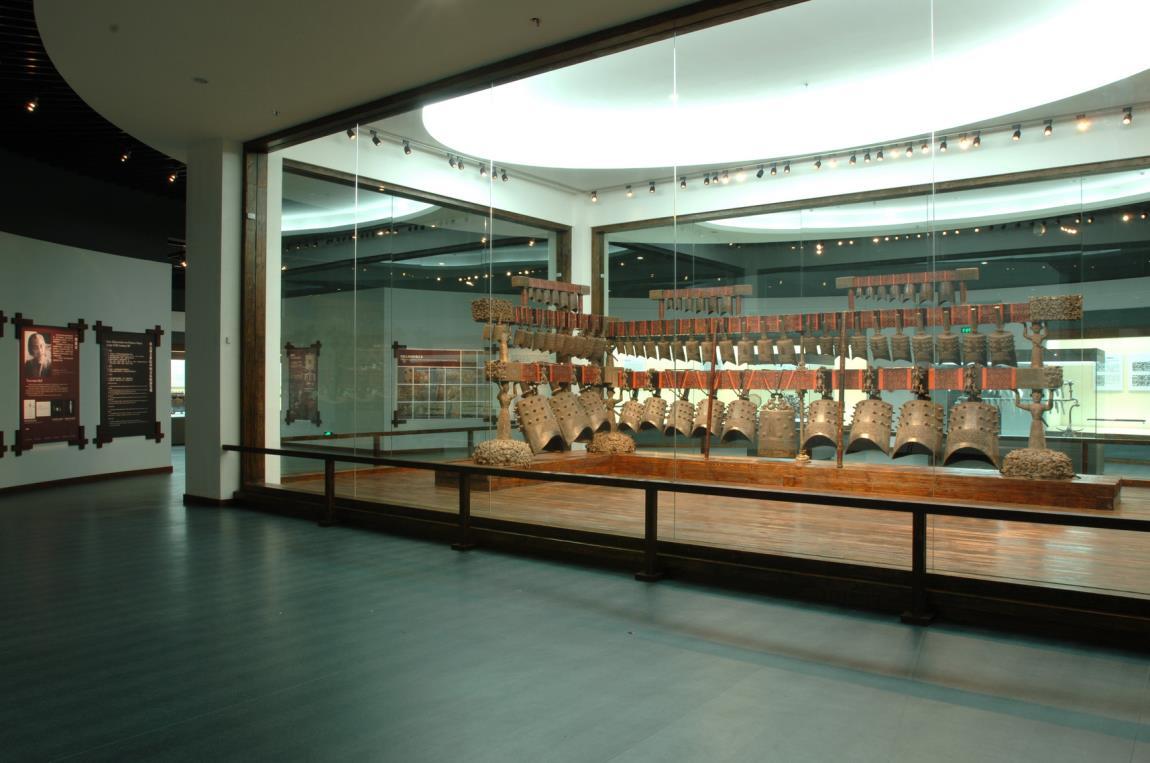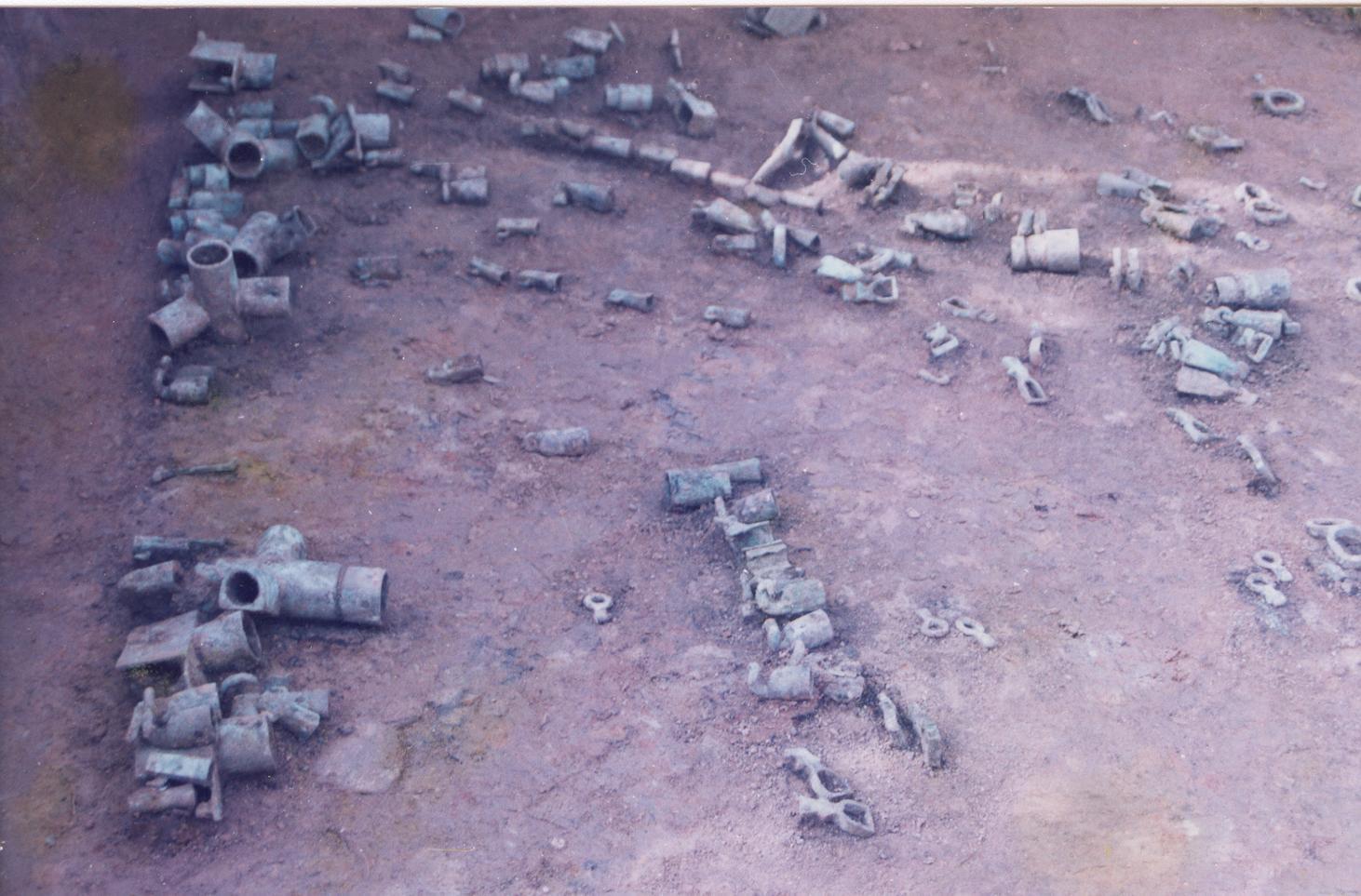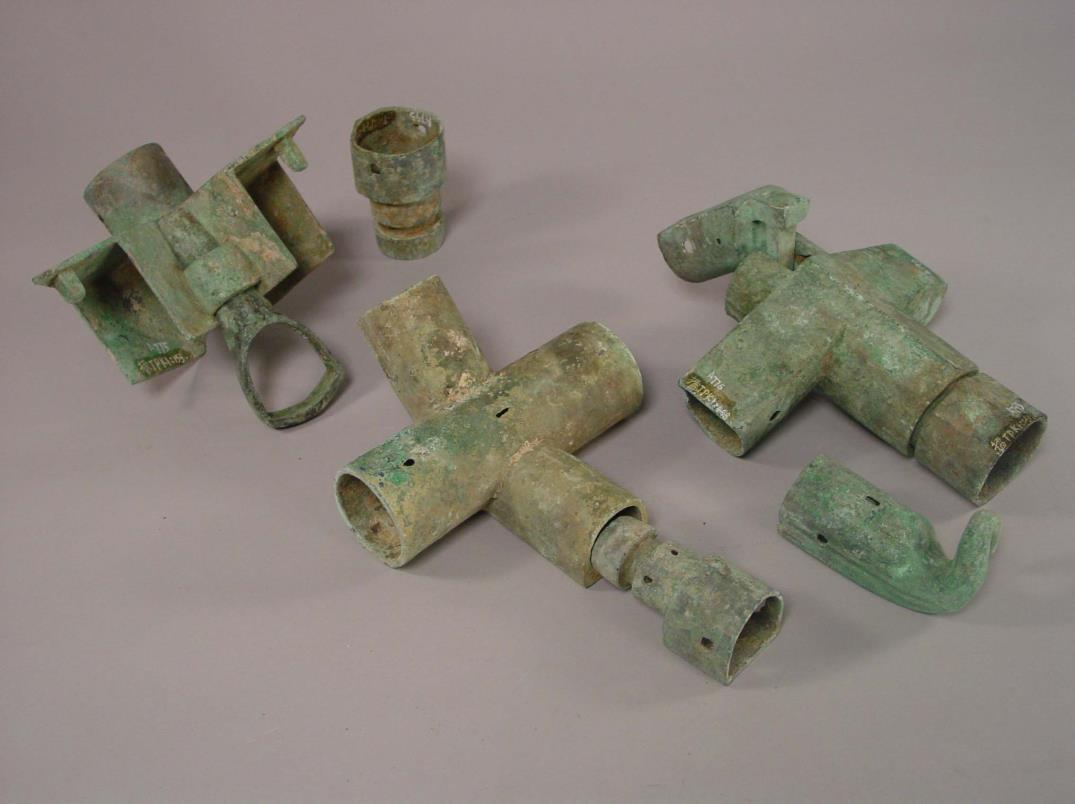PUBLISHED 2021. Please visit the publication's webpage.
This project will produce a report on the excavation of the secondary pits associated with the tomb of Marquis Yi, ruler of the state of Zeng, who died in 433 BCE. The tomb is located at Suizhou in Hubei province, China. Excavated in 1978, it is the richest tomb known from the entire pre-imperial period and one of the most important archaeological discoveries ever made in China. The tomb contained ten metric tons of bronze artifacts—ritual vessels and, along with them, a tuned set of 65 bells weighing 2,500 kg and bearing inscriptions about music theory (Figure 1). The bell inscriptions constitute the earliest text on music theory known from China; they are hugely important for the light they shed on the rather different music theory of later periods in Chinese history and also for comparison with roughly contemporary texts from Greece. An archaeological report on Marquis Yi’s tomb was published in 1989, and most of the tomb’s furnishings are permanently displayed at the Hubei Provincial Museum in Wuhan. Temporary exhibitions of selected items have traveled to museums in many countries, including the Metropolitan Museum of Art in New York and the Sackler Gallery of Art in Washington DC.
In January of 1999, a row of five secondary pits was discovered 15 meters east of Marquis Yi’s tomb. The pits were excavated by Zhang Changping, the director of this publication project, who was a researcher at the Hubei Provincial Institute of Archaeology at the time. Pit No. 1 contained 465 bronze objects or object fragments of forms not previously known. Their patterned disposition in the pit suggests that they all belonged to a single structure (Figures 2&3). Our guess is that they are structural parts of a canopy, bronze fittings of wooden parts that have disintegrated. Some of them evidently were made so that they could be fitted together, dismantled for storage, and reassembled at need. As for the other four pits, they contained orderly rows of pottery urns, jars, pots, plates, lids, and so forth, many of which were found sealed with locking mechanisms and had held food. These perhaps were funerary offerings for the marquis’ consumption in the afterlife.



